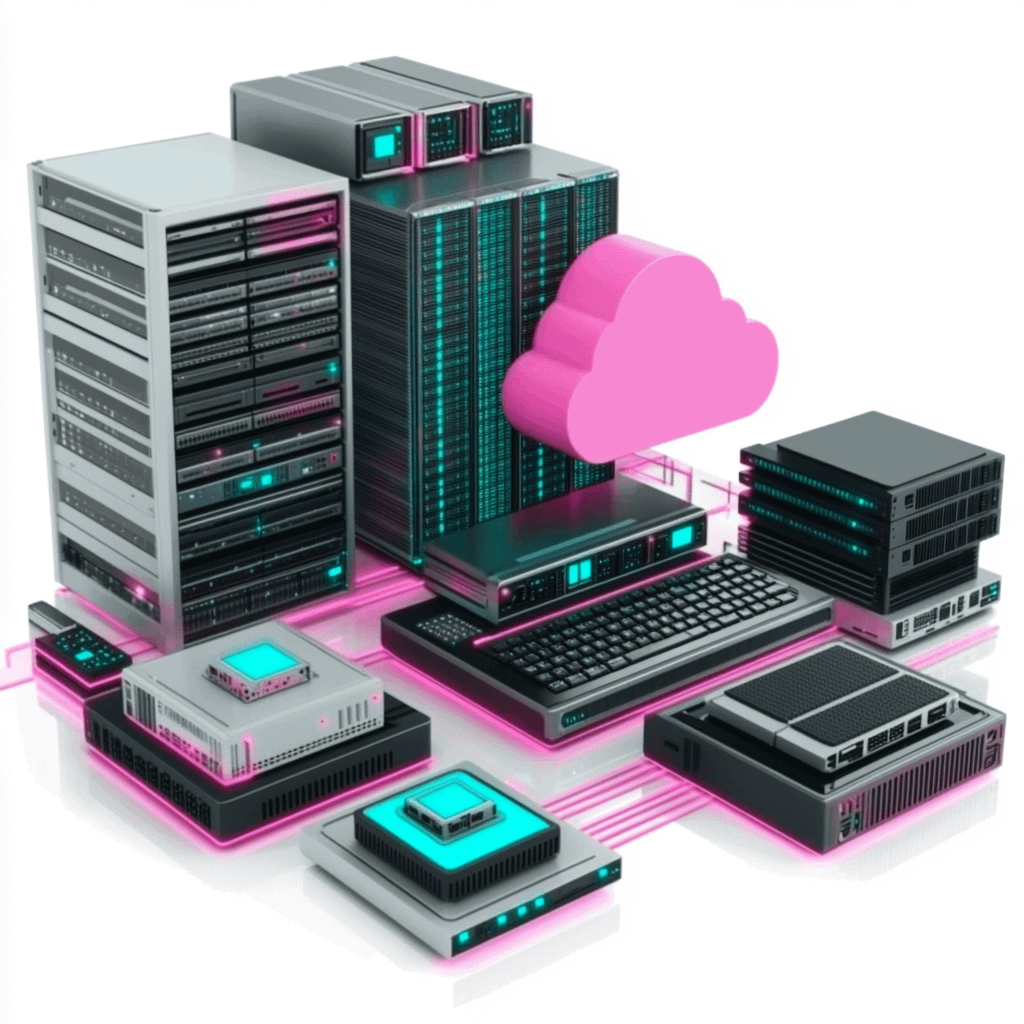
Imagine a self-driving car that needs to react fast to avoid an accident. Or a doctor doing remote surgery with robotic arms. In these cases, quick processing is crucial. The traditional cloud might not be fast enough.
Cloud computing stores data in big, central data centers. Edge computing moves processing closer to where data is made. So, what’s the difference? Which is better for you?
This article will help you decide. We’ll compare edge and cloud computing. We’ll look at their strengths and weaknesses. And what they’re best for. Let’s dive in!
Understanding Cloud Computing: The Centralized Powerhouse
Cloud computing uses the internet for computer services. You don’t store data on your own computer. Instead, it’s on someone else’s servers. It’s like renting computing power instead of owning it. It allows users to access and use computing resources on-demand without having to manage physical hardware themselves
Core Principles of Cloud Architecture
Cloud computing uses central data centers. These centers use virtualization to create many virtual machines on one server. This makes it easy to scale up or down. You only pay for what you use, like with AWS, Azure, Alibaba or Google Cloud. These cloud architectures, allow systems to handle increased workloads by adding resources.
Advantages of Cloud Computing
Cloud computing is very scalable. Need more storage? It’s easy to add. The pay-as-you-go system saves you money. Cloud providers handle management. Plus, you get a wide range of services. Elasticity complements scalability by enabling automatic scaling up or down based on demand. Cloud architectures must be designed for resilience, able to withstand and recover from failures. Security is a critical consideration in cloud design. The principle of “defense in depth” involves implementing multiple layers of security controls. Businesses are adopting cloud computing fast.
Disadvantages of Cloud Computing
Latency can be a problem. Sending data to a central server takes time. Bandwidth limitations can slow things down too. Security is also a concern since your data is in one place. The increased risk to data security and privacy. With sensitive information stored on remote servers, organizations face heightened threats of data breaches and unauthorized access. You might get locked into using a specific vendor’s services. Businesses may face challenges when trying to switch between cloud providers or integrate different cloud services.
Exploring Edge Computing: Decentralized Intelligence at the Source
Edge computing brings processing closer to the data source. Instead of sending everything to the cloud, data is analyzed and processed locally.Decentralized Architecture: Edge computing processes data near its source, such as IoT devices, sensors, or local servers, rather than in centralized data centers This lowers latency and improves performance. Bandwidth Optimization, Local data processing reduces the strain on network bandwidth, improving efficiency and potentially lowering costs.
The Edge Computing Architecture
Edge computing spreads processing across many devices. These are closer to where data is collected. Think of IoT gateways, smartphones, and on-premise servers. These devices process data locally before sending it to the cloud. This makes the whole system faster.
Advantages of Edge Computing
Edge computing offers faster response times and real-time data processing capabilities, essential for applications like smart traffic systems, autonomous vehicles, and industrial automation.By reducing the need for cloud storage and minimizing data transfer to centralized servers, edge computing can lead to significant cost savings, especially for organizations processing large amounts of data.
It also uses bandwidth better. Only important data is sent to the cloud. It boosts security as data stays local. Real-time processing becomes possible.Keeping data processing local helps organizations adhere to data privacy laws and regulations, ensuring data sovereignty and reducing compliance risks.

Disadvantages of Edge Computing
The initial investment can be high.Edge devices often have limited computing power and storage compared to cloud data centers. Managing many devices adds complexity. Resources at the edge are limited. Security is a challenge too, distributed architecture can increase the attack surface, requiring robust security measures You have many devices to protect.
Key Differences: Edge vs. Cloud
Edge and cloud have different strengths. The better option depends on the situation. Let’s explore the main differences.
Latency and Bandwidth
Edge computing wins when low latency is key. It processes data locally. Cloud computing has more latency because data must travel to a central server. Edge saves bandwidth. Only vital data goes to the cloud. This saves costs.
Data Processing and Storage
Edge computing focuses on local data processing. Only necessary data is sent to the cloud for storage. Cloud relies on centralized data centers for processing and storage. It’s all about location and speed.
Security Considerations
Cloud benefits from strong, centralized security. But, it’s a single point of failure. Edge keeps data local. This lowers the risk of broad breaches. Still, each edge device needs its own security.
Scalability and Management
Cloud offers great scalability. Need more space? It’s easy to add. Edge management can be tricky. Each device needs attention. It’s a trade-off.
Use Cases: Where Each Shines
The best option changes based on the job. Here are some examples of what works for cloud and edge.
Cloud Computing Use Cases
Cloud computing is great for big data analytics. It handles huge amounts of info. Content streaming and enterprise apps use the cloud. Disaster recovery is also easier in the cloud.
Edge Computing Use Cases
Edge computing powers self-driving cars. It makes smart factories possible. Healthcare monitoring and retail analytics use edge too.
The Future: Hybrid Architectures and Convergence
More organizations are mixing edge and cloud. This gives the best of both worlds.
Hybrid Cloud and Edge Strategies
A hybrid strategy uses both edge and cloud. First, figure out what you need. Do you need low latency, security, or cost savings?
Then, choose the right setup. Edge is for real-time data, and the cloud for long-term storage.
The Role of 5G and IoT
5G and IoT are pushing edge computing. 5G gives faster speeds. IoT creates lots of data. Edge computing is needed to process it fast.
Conclusion
Edge and cloud computing are different. Cloud uses central data centers. Edge spreads processing closer to the source.
The right choice depends on your needs. Hybrid setups mix edge and cloud. They offer great potential. It’s not about choosing one or the other. It’s about finding what works best for you.

